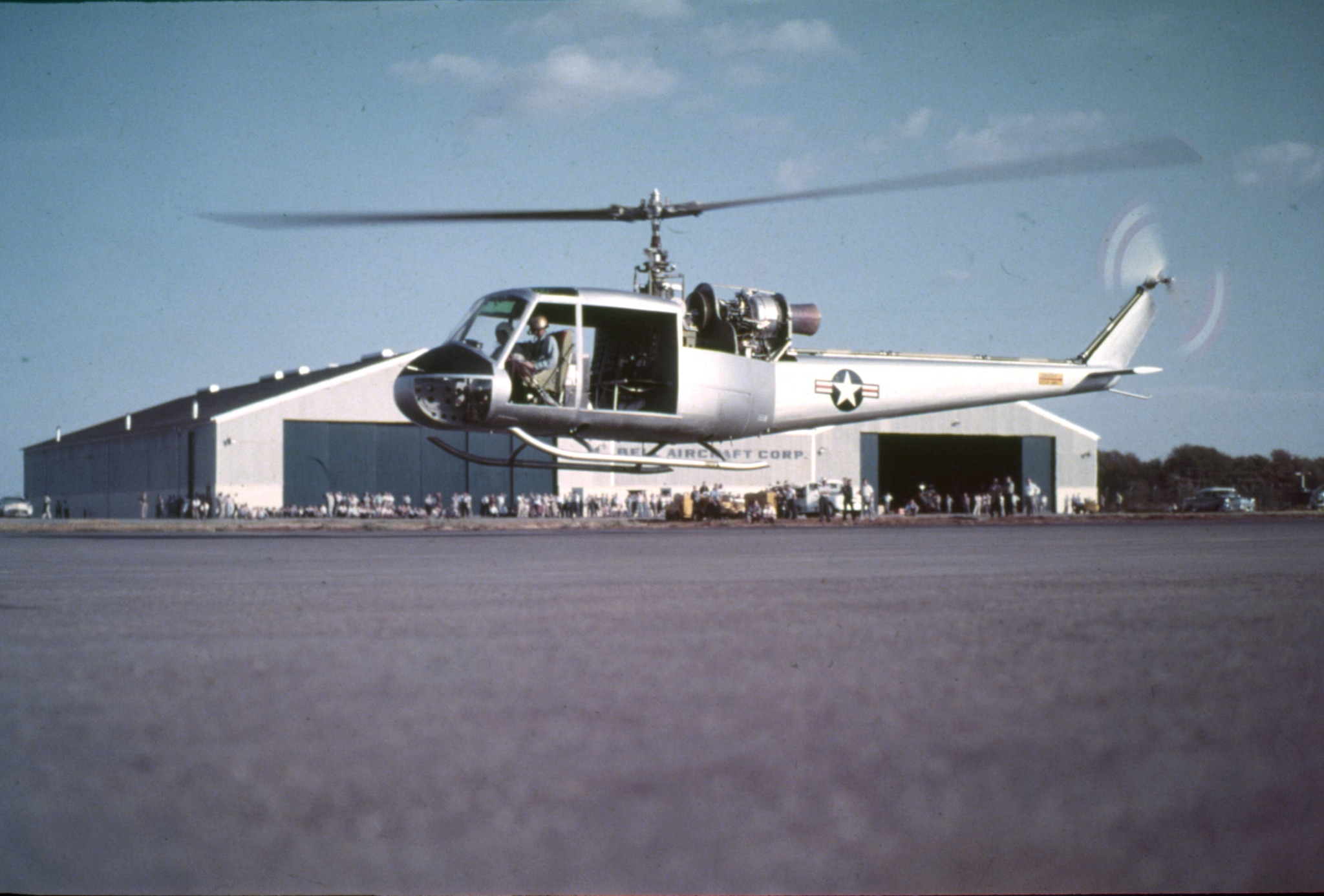
20 October 1956: Bell Aircraft Corporation Chief Pilot Floyd W. Carlson and Chief Experimental Test Pilot Elton J. Smith made the first flight of the Bell Model 204 (designated XH-40-BF serial number 55-4459 by the United States Army) at Bell’s helicopter factory in Hurst, Texas.
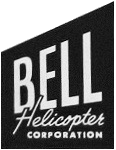
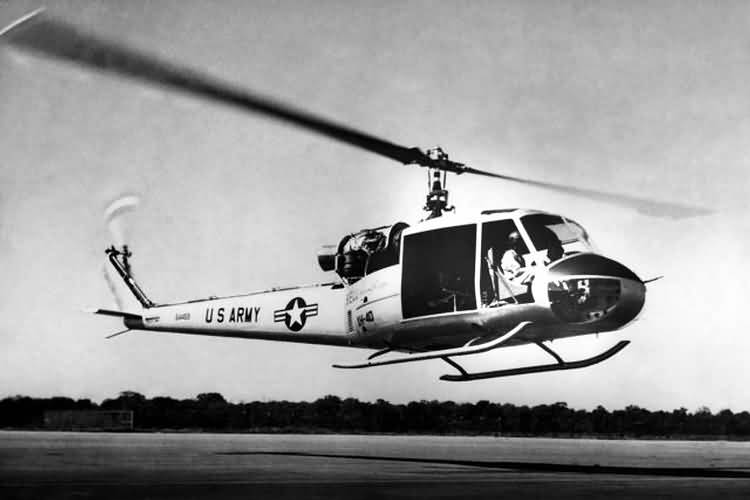
The two blade semi-rigid, under-slung main rotor had a diameter of 44 feet, 0.00 inches (12.294 meters), and turned counter clockwise when viewed from above. (The advancing blade is on the helicopter’s right.) The blades used a symmetrical airfoil. They had a chord of 1 foot, 3.00 inches (0.381 meters) and 10° negative twist. The main rotor hub incorporated pre-coning. At 100% NR, the main rotor turned 324 r.p.m. The two blade tail rotor assembly had a diameter of 8 feet, 6.00 inches (2.591 meters). It was mounted on the left side of the pylon in a pusher configuration and turned counter-clockwise as seen from the helicopter’s left. (The advancing blade is above the axis of rotation.)
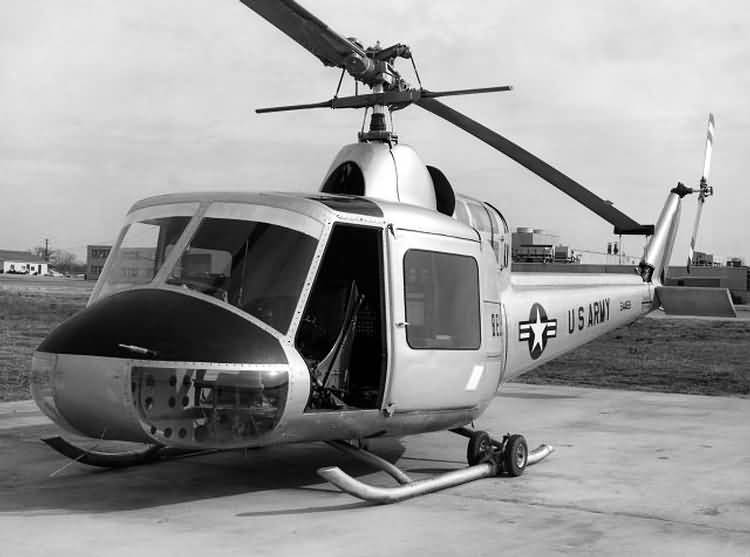

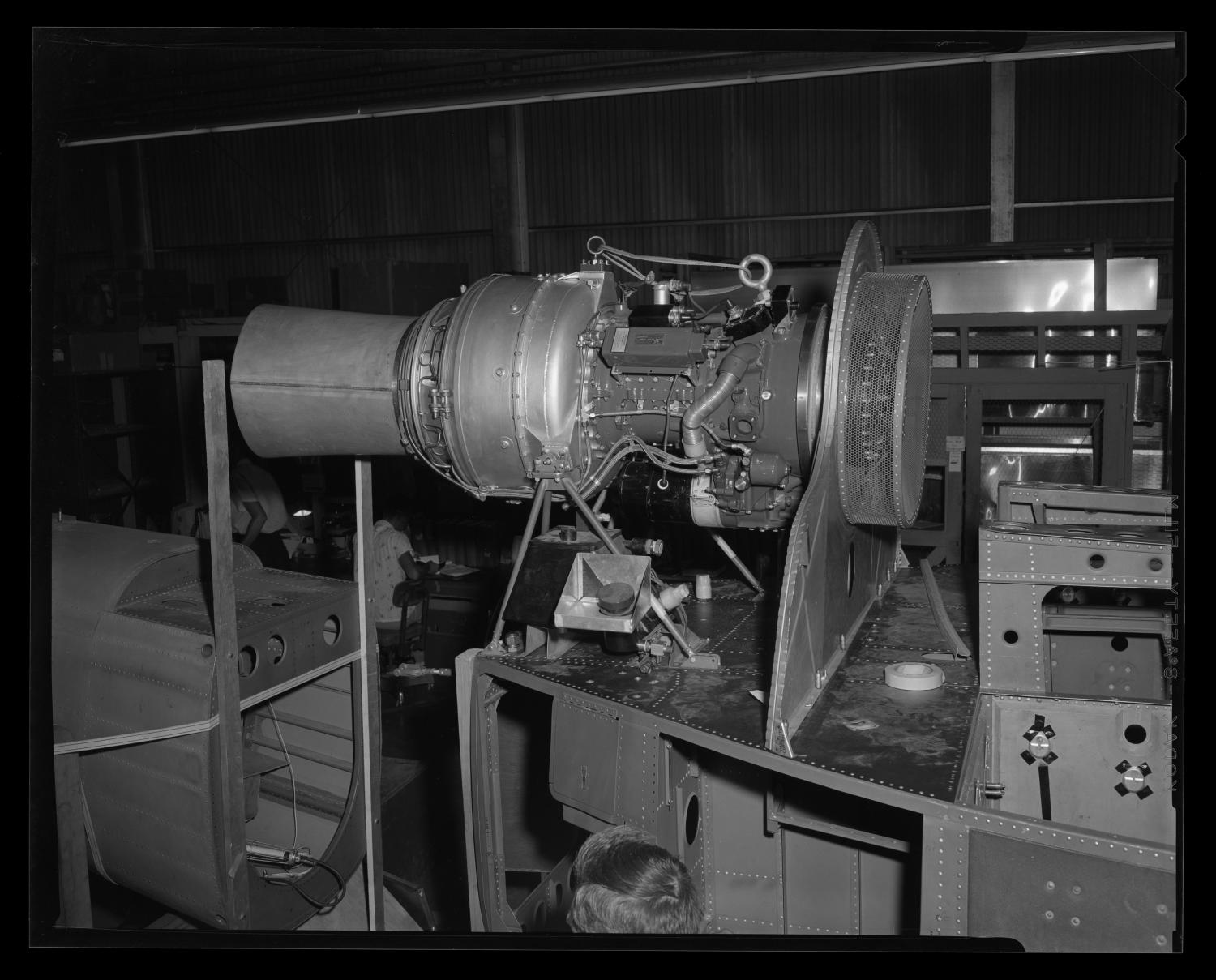
The XH-40 had a maximum speed of 133 knots (153 miles per hour/246 kilometers per hour) at 2,400 feet (732 meters), and 125 knots (144 miles per hour/232 kilometers per hour) at 5,000 feet (1,524 meters). The in-ground-effect hover ceiling (HIGE) was 17,300 feet (5,273 meters) and the service ceiling was 21,600 feet (6,584 meters). The helicopter’s fuel capacity was 165 gallons (625 liters), giving it a maximum range of 212 miles (341 kilometers).
Three XH-40 prototypes were built, followed by six YH-40 service test aircraft. The designation of the XH-40 was soon changed to XHU-1.
This helicopter was the prototype of what would be known world-wide as the “Huey.” The helicopter was designated by the U.S. Army as HU-1, but a service-wide reorganization of aircraft designations resulted in that being changed to UH-1. Produced for both civil and military customers, it evolved to the Model 205 (UH-1D—UH-1H), the twin-engine Model 212 (UH-1N), the heavy-lift Model 214, and is still in production 66 years later as the twin-engine, four-bladed, glass-cockpit Model 412EPI and the Subaru Bell EPX.
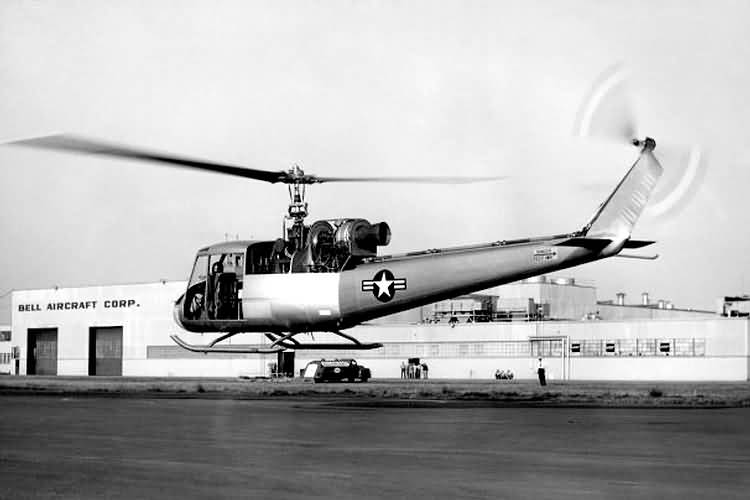
Sources differ as to the date of the first flight, with some saying 20 October, and at least one saying 26 October, but most cite 22 October 1956. This individual aircraft is at the U.S. Army Aviation Museum, Fort Rucker, Alabama. The museum’s director, Robert S. Maxham, informed TDiA that, “The earliest and only historical record cards that we have on 4459 are dated 2 MAY 1958, and at that time the aircraft had 225.8 hours on it.” The Smithsonian Institution National Air and Space Museum, a generally reliable source, states the first flight was 22 October 1956.
Many sources also state the the XH-40 first flew on the same day on which Lawrence D. Bell died, which was 20 October.
The earliest contemporary news report yet discovered by TDiA, states,
On October 20, after several hours of ground running, the new Bell XH-40 helicopter was flown for the first time.
—FLIGHT and AIRCRAFT ENGINEER, No. 2506, Vol. 71, Friday, 1 February 1957, Page 136, at Column 1
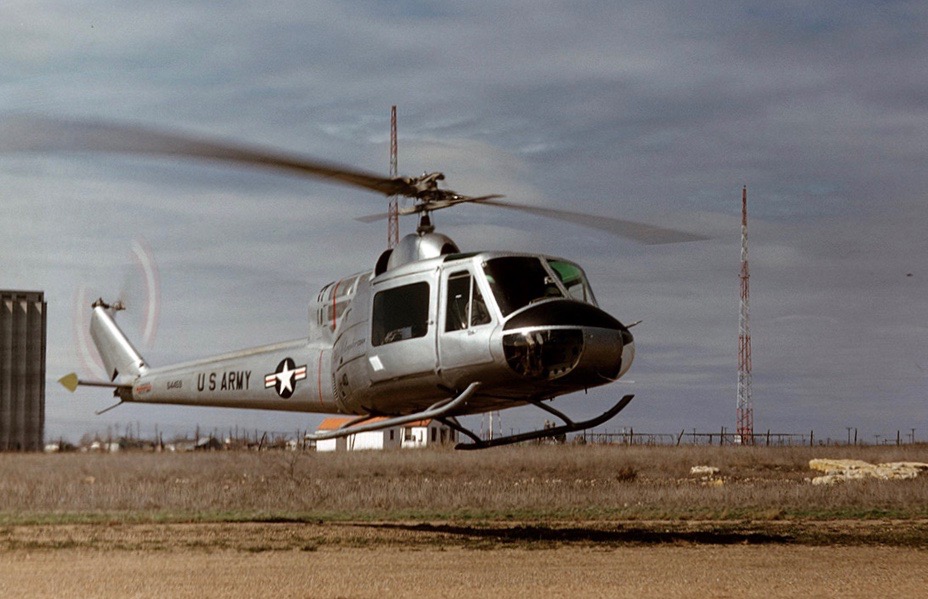
Beginning in 2015, XH-40 55-4459 was restored by Blast Off, Inc., at Atmore, Alabama. It was then returned to the Army Aviation Museum.
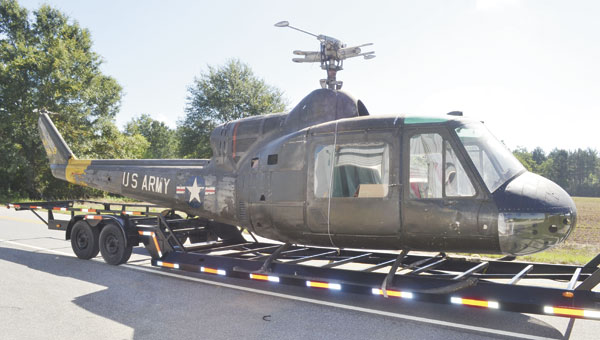
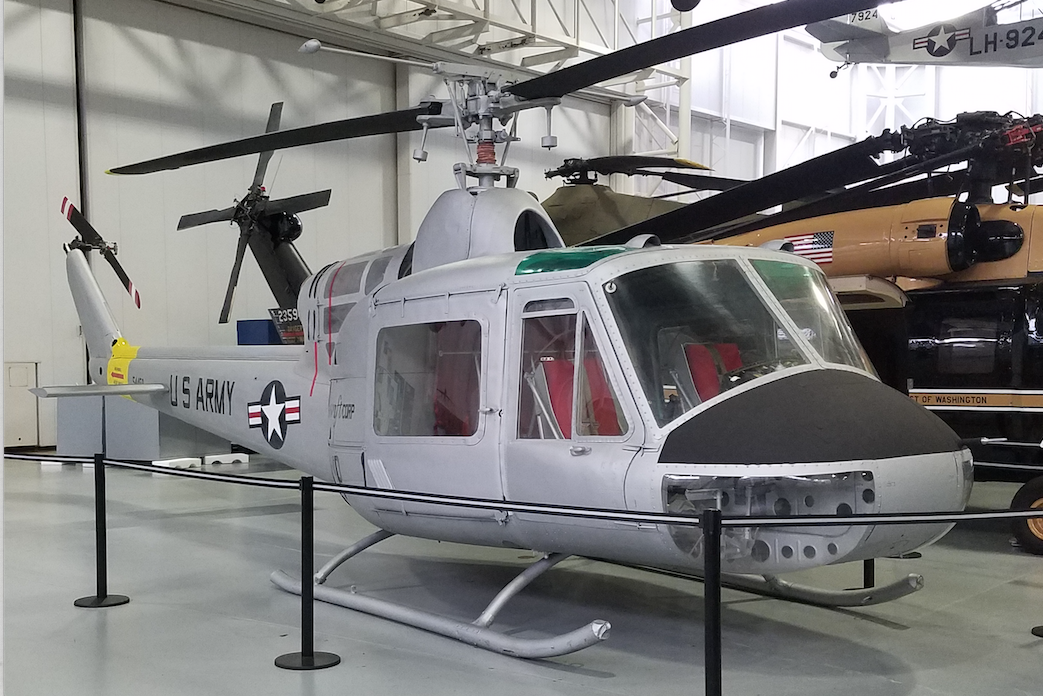
© 2018, Bryan R. Swopes
Thanks for doing this, Mr. Swopes. It is good to have an expert commenting with good photos to boot!
Walt
I am honored, Sir. Thank you. —Bryan
p.s.: I quoted from one of your books in this morning’s post.
I have only about 1,000 hours in Hueys from A to H models, most of my hours was during my first Vietnam tour, 1967-68. From there I returned to Ft. Rucker where, after completion of the instructor’s course I thought the ROTORY “Q” course, then the advanced instruments course, as a Flight Commander, to Initial Entry students. It was all worth it!
Thank you all, Mr Swopes, Mr Boyne, Mr Gordon and all those heroes I rucked up and flew with in the 1/8th and 2/12th Cavalry. The UH-1, in all its iterations, was a trusty and forgiving mount.
Please note the short main shaft. This model is referred to as the A model with the B and subsequent models having a longer main rotor shaft In flight school we had several A models and the instructors shared with us that it was quite easy to strike the tail boom with a main blade.
I was a crew chief, door gunner, on a Huey Gun Ship, from May 1965 to May 1966. I was in nearly 1500 combat missions, being shot down 6 times, and shot 8 times, quite a busy year. The Huey was one hell of a combat weapon, they took a tremendous amount of damage, and kept on going. I guess you could call it, an energizer Helicopter
Another big problem of the short shaft was “mast bump”.
This occurred during a slope Landing.
When you’re settling down ònto an excessive angle, the rotor head may impact the mast every rotation. Not good.
Wow. A prototype of an aircraft line that survived! That doesn’t happen very often. Refreshing!
XP38, XB17, XP47, XB29, All prototypes that were destroyed during flight testing. The prototype Mustang crashed as well, but, as written about by Mr Swopes, was repaired and flew on, although its final disposition is unknown.
It’s such a great legacy aircraft. I have flown several variants over the years, and my favorite was the UH-1M, which had the T53-L-13B 1400 shp engine and 540 rotor system. I was asked at an airshow if it was as fun to fly as it looked. Yup, like a ’56 Chevy with a 396, it hauls a$$!
You get all the fun, Keith. 🙂
The first of many. Perhaps the DC-3 of the rotary wing world.
I Flew the UH-1H for the first time in early 1982 while attending flight school as a Warrant Officer Candidate WOC, the UH-1H were a mixture of Vietnam aircraft and factory aircraft. I still remember that those aircraft that had nose mounted pitot tubes were limited to 112 knots and the aircraft that had roof mounted pitot tubes were limited to 124 knot.